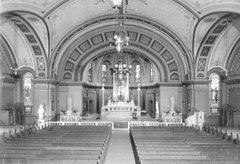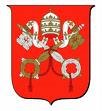Scholars Urge More Research on Holy Grail
Congress Discusses Authenticity of Chalice
VALENCIA, Spain, NOV. 24, 2008 (Zenit.org).- Though no one knows if Valencia's grail is the true Last Supper chalice, a group of experts says it has tremendous cultural value due to its impact on history and literature.
This was affirmed by members of the international congress "Valencia, City of the Holy Grail," focusing on the chalice traditionally associated with the institution of the Eucharist.
The congress was held Nov. 7-9 at the Catholic University of Valencia and was organized by the Archdiocese of Valencia, the cathedral’s metropolitan chapter, the Catholic University of Valencia, the Spanish Center for Sindonology, the Royal Brotherhood, and the Holy Chalice Confraternity.
Experts from several countries attended the congress. They gave presentations on the ways in which this relic has marked history and literature since its move from Rome to Spain by Lawrence the Martyr in the year 258, as held by tradition.
The body of existing data points to the Valencia grail as the most probable authentic chalice of Christ.
Unique
Antonio Beltrán, professor of archaeology at the University of Zaragoza, noted that the cup is formed by a deep red agate, called "Oriental carnelian," with streaks in the form of flames. By its material he asserts that it must come from a workshop in Palestine, Syria or Egypt between the fourth century B.C. and the first century A.D. The subsequent additions, such as the precious stones and the frame, date from the 13th or 14th century.
Jorge Manuel Rodríguez, president of the Spanish Center for Sindonology, explained that although films have always shown "a wooden Holy Grail, […] that material did not comply with the norms of purification of the Jews."
Another element discussed by the scholars was the journey of the chalice from Rome to Valencia.
The experts affirmed that if the chalice arrived in Rome from Jerusalem, it was most likely taken by the Apostle Peter himself.
Jaime Sancho, president of the liturgy commission of the Archdiocese of Valencia, presented a datum that supports the theory that the first popes celebrated the Eucharist with the same chalice that Jesus used.
Sancho explained that in the Roman Canon, which dates back to the second century, it says literally at the moment of consecration "and, taking this glorious chalice in his holy and venerable hands," instead of "the chalice."
This and other proofs contributed by Sancho demonstrate the existence in Rome of a unique chalice.
This was affirmed by José Vicente Martínez, professor of ancient history at the University of Valencia, and American researcher Janice Bennet, doctor in Spanish literature. They both spoke about Pope Sixtus II, martyred in Rome during Valerian’s persecution, entrusting the Holy Grail to Deacon Lawrence to protect it from the emperor.
A manuscript by St. Donatus told of this event, said Bennet, as well as the fact that Lawrence was a native of Valencia, not Huesca, as traditionally believed.
Several presenters gave historical proofs of the presence of the chalice in Spain over many centuries, from the study of various annals and paintings.
German anthropologist Michael Hesemann stated that "as opposed to what many think, the grail legends did not begin with the Anglo-Saxon accounts of King Arthur, but in the rooted tradition that says that the chalice of the Last Supper was already in Spain in the Middle Ages."
Faith and science
The researchers were practically unanimous in supporting research on the chalice with modern scientific techniques to determine its origin, though they emphasized that its religious value does not depend on the resulting discoveries.
Miguel Navarro, doctor in church history from Rome’s Gregorian University, stated that the chalice "is not a magical object, but consecrated by Jesus' use of it and by the faith that perceives it as such, which has great religious value, regardless of the fact that it cannot be proved with absolute scientific certainty that it is the Lord’s chalice."
Relics, he added, are not "simple keepsakes, but something more valuable: palpable evidence of the reality of the human or historical event on which our faith is based, as salvation takes place in history, in the flesh."
Moreover, Father Manuel Carreira, doctor of physical sciences, added that science and faith "are not opposed." However, he specified that "although science can give an explanation of all this, it cannot demonstrate anything literally about what happens in the Eucharist."
Navarro added that the chalice "insofar as relic, is beyond and above science, because its primordial significance belongs to the realm of faith, which does not mean that we approach it in an anti-scientific or fundamentalist way." Rather, "we have the obligation to study it scientifically in its materiality."
Benedict XVI used the chalice during the Mass with which he concluded the World Meeting of Families in Valencia in July, 2006. Pope John Paul II also used it in his visit to the city.
that's it, folks!





















So we don't need to go looking for the Holy Grail after all: we know where it is!
ReplyDeleteI have always thought that, though the romance of the Grail legend is attractive, the "search" for the Grail is superfluous. Every Catholic church has several holy grails.
But even more importantly, every Catholic church has as its living Heart that which the Grail contains!
It still would be inspiring to see the Chalice used by Our Lord; just as it would be inspiring to visit the land where He walked and shed His Blood.
ReplyDelete